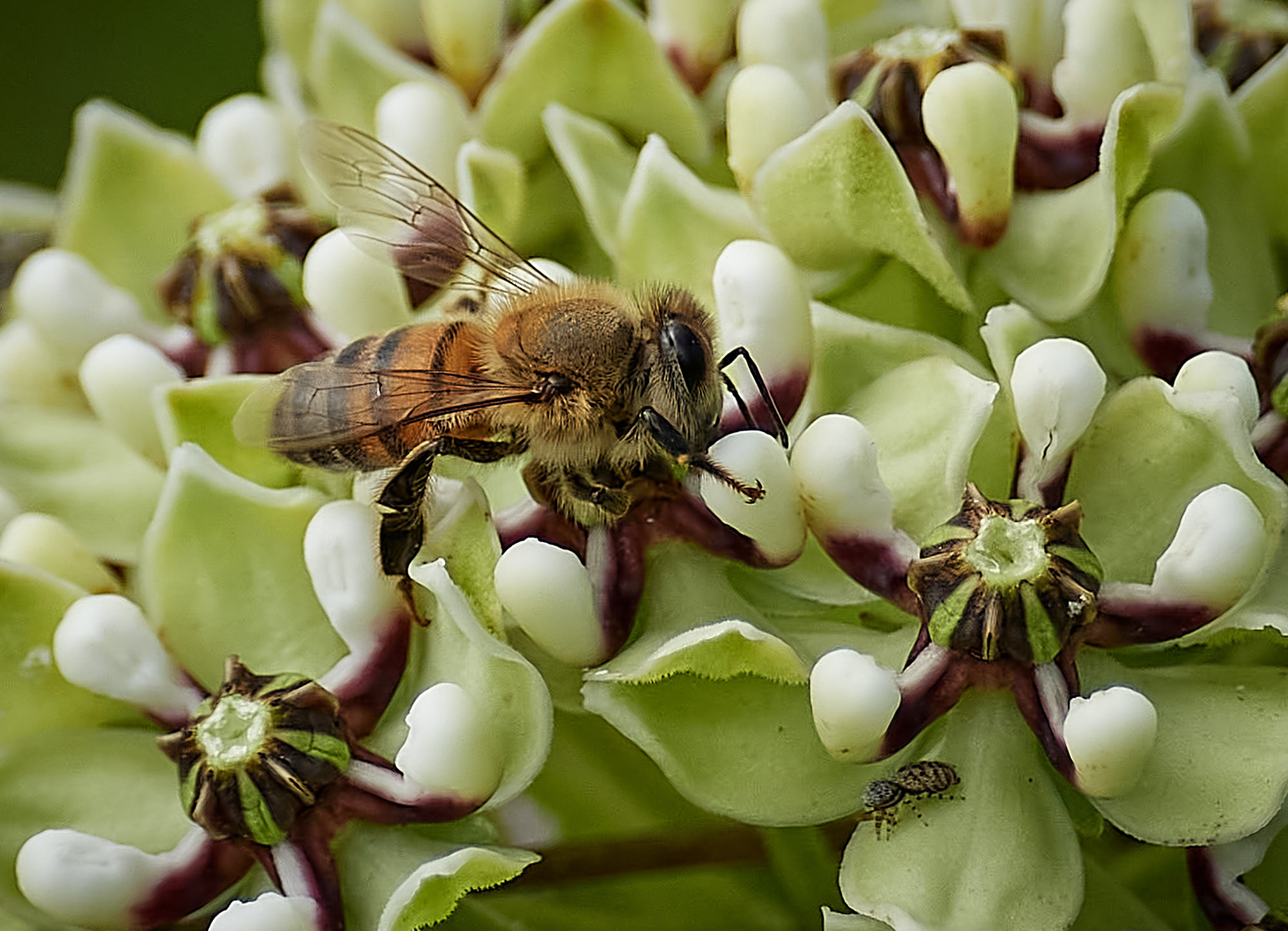Bees with stripes, also known as bumblebees, are robust pollinators that play a vital role in supporting biodiversity. With their distinctive black and yellow markings, they are easily recognized and are commonly found in various habitats worldwide.
These fuzzy insects are social creatures and live in colonies, where they work together to gather nectar and pollen from flowers. Bumblebees are particularly important for the pollination of certain crops and wildflowers, contributing to food production and the overall health of ecosystems.
Due to factors such as habitat loss and pesticide use, bumblebee populations face challenges, and their conservation is crucial for maintaining a balanced ecosystem. Understanding the role and characteristics of bees with stripes is essential for appreciating and protecting these remarkable pollinators.

Table of Contents
1. The Fascinating World Of Bees With Stripes
Bees with stripes are a captivating aspect of the insect world. These distinctive markings serve as a distinguishing feature that sets them apart from other species. There are various types of bees that exhibit stripes, each with its own unique characteristics.
Some of the most well-known striped bees include the bumblebee, carpenter bees, and sweat bees. These bees play crucial roles in pollination, ensuring the survival of many plant species. The stripes on their bodies serve as a visual cue, helping them to attract mates and communicate within their colonies.
Moreover, these patterns also act as a defense mechanism, warning potential predators of their sting. From the vibrant yellow and black stripes of the bumblebee to the metallic hues of carpenter bees, the world of bees with stripes is truly fascinating.
Understanding their diversity and importance in nature is essential for the overall ecosystem and our own well-being.
The Importance Of Color And Pattern In Bee Communication
Bees use color and pattern to communicate important messages within their colony. Color plays a crucial role in attracting potential mates, while patterns serve as distinctive signals to recognize fellow members. Stripes, in particular, hold great significance in bee communication.
These linear designs not only aid in species recognition but also provide information about the individual bee’s age and health. Stripes act as visual markers that help bees maintain a successful social structure within the hive. By observing the colors and patterns displayed by their fellow bees, individuals can determine their role and responsibilities within the colony.
It is fascinating to witness how these small insects utilize color and pattern to effectively communicate their needs and maintain the harmonious functioning of the bee community.
The Unique Biology Behind Striped Bees
Striped bees possess a unique biology that sets them apart from their non-striped counterparts. The distinct striped pattern on their bodies is largely influenced by genetics. These genes play a crucial role in determining the color and distribution of the stripes.
However, it’s not just genetics that contribute to bee striping. Environmental factors also play a significant role. The availability of certain resources and exposure to specific conditions can impact the pigmentation and pattern of bee stripes. This intricate interplay between genetics and the environment leads to the diverse range of bee color patterns we observe in nature.
Understanding the biology of striped bees can provide valuable insights into the fascinating world of insect genetics and adaptation.
Conservation Efforts And Future Implications For Bees With Stripes
Conservation efforts play a crucial role in ensuring the future of bees with stripes. Habitat loss has a significant impact on these unique insects, threatening their survival. To protect them, it is essential to address the loss of their natural habitat.
Strategies such as creating protected areas, promoting sustainable agriculture practices, and raising awareness about the importance of bees can contribute to their conservation. Additionally, preserving wildflowers and other plants that serve as food sources for striped bees is vital. Engaging communities and encouraging participation in bee-friendly initiatives can have far-reaching implications for their survival.
Ultimately, by prioritizing the protection and conservation of bees with stripes, we can secure the biodiversity and ecological balance necessary for a sustainable future.
Frequently Asked Questions On Bees With Stripes
Are Bees With Stripes Dangerous?
Bees with stripes, such as bumblebees, are generally not dangerous and only sting when provoked.
What Is The Purpose Of Stripes On Bees?
Stripes on bees serve as a form of warning to predators, signaling their ability to defend themselves.
Do All Bees Have Stripes?
Not all bees have stripes, as some species may have solid colors or other patterns instead.
How Do Bees Get Their Stripes?
Bees get their stripes through pigmentation in their exoskeleton, which gives them their distinct patterns.
Can Bees See Their Own Stripes?
Bees cannot see the full range of colors, so they may not see their own stripes as sharply as we do.
Conclusion
Bees with stripes are fascinating creatures that play a crucial role in our ecosystem. From their distinctive black and yellow patterns to their complex social structures, these little insects never cease to amaze us. As pollinators, they contribute to the reproduction of countless plant species, ensuring the survival of our natural environment.
Learning about their behavior, such as their dances and communication methods, has provided valuable insights into social organization and cooperation. Bees with stripes have also inspired artists, writers, and scientists throughout history, showcasing their importance and beauty. It is our responsibility to protect these incredible creatures by conserving their habitats, reducing pesticide use, and promoting awareness.
By understanding and appreciating the vital role of bees with stripes, we can create a sustainable future for both them and ourselves. Let us cherish and celebrate these incredible insects, as they continue to make our world a more vibrant and flourishing place.